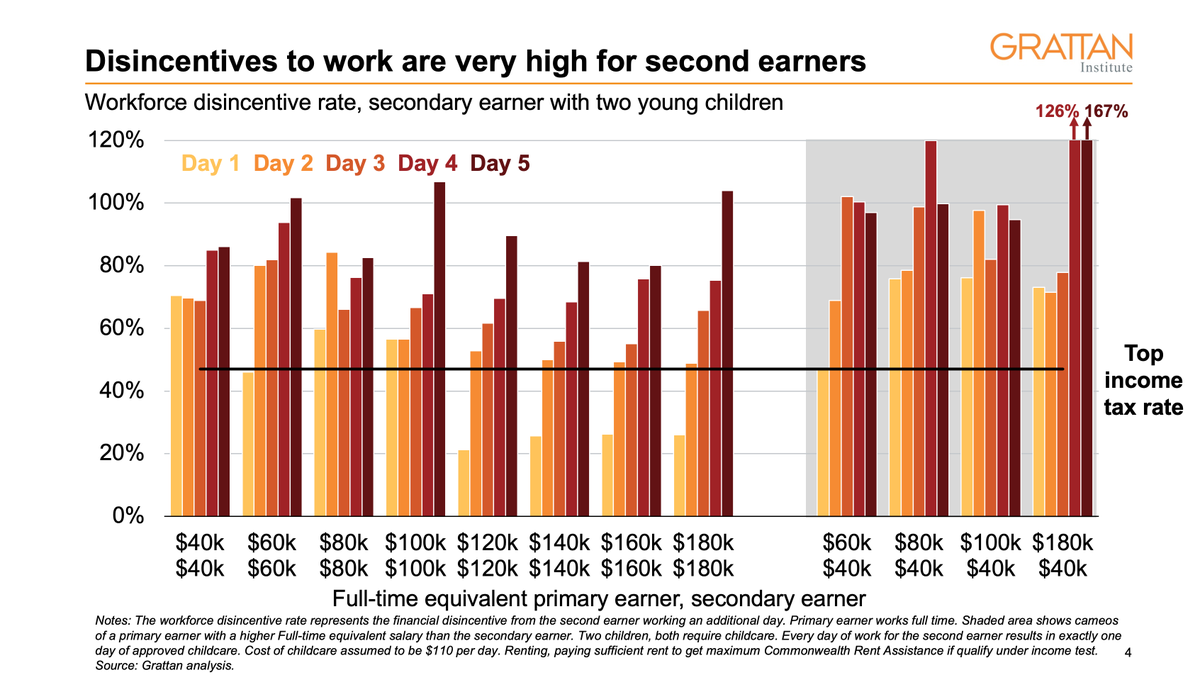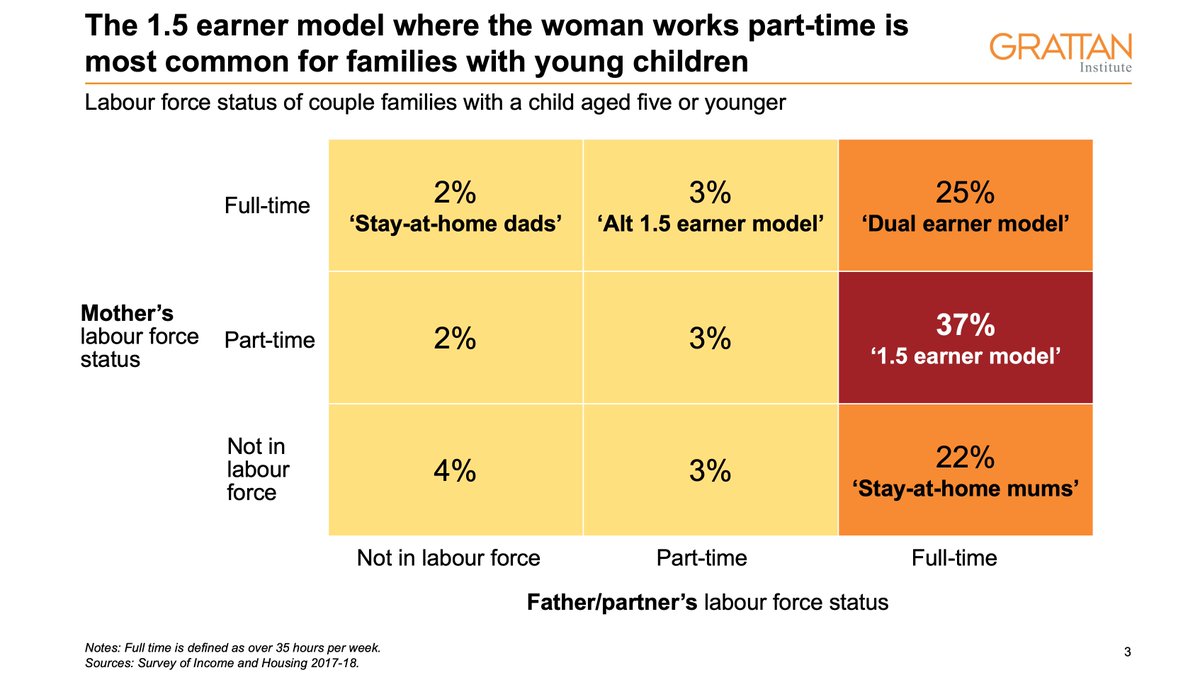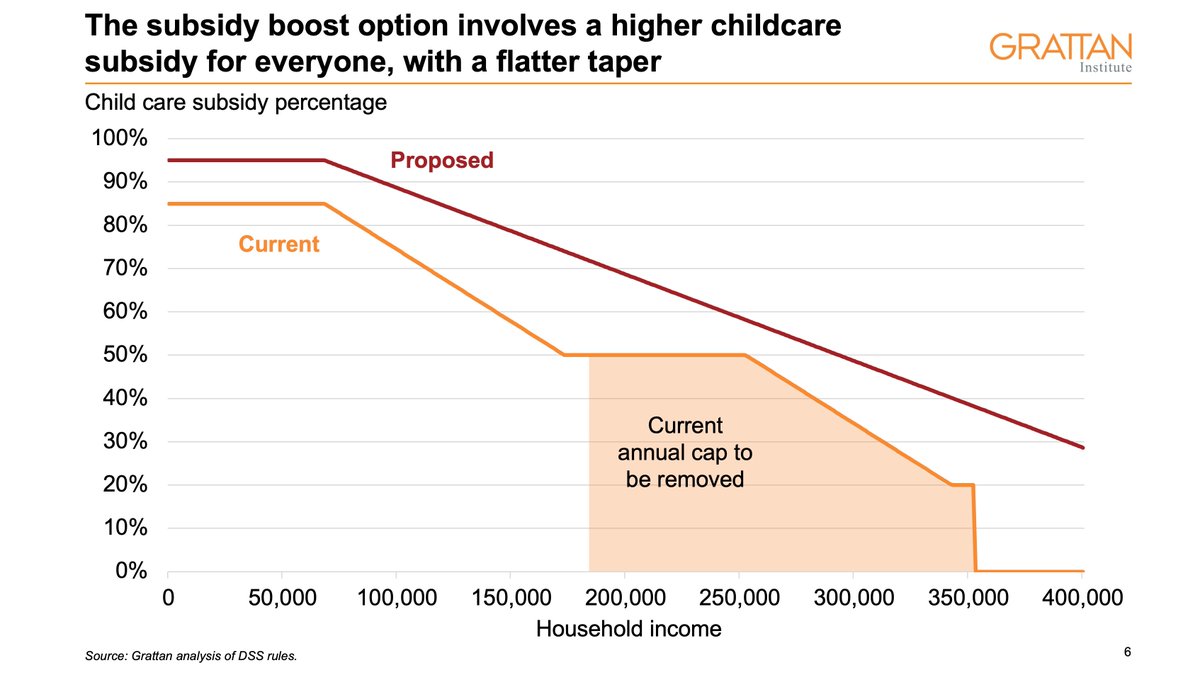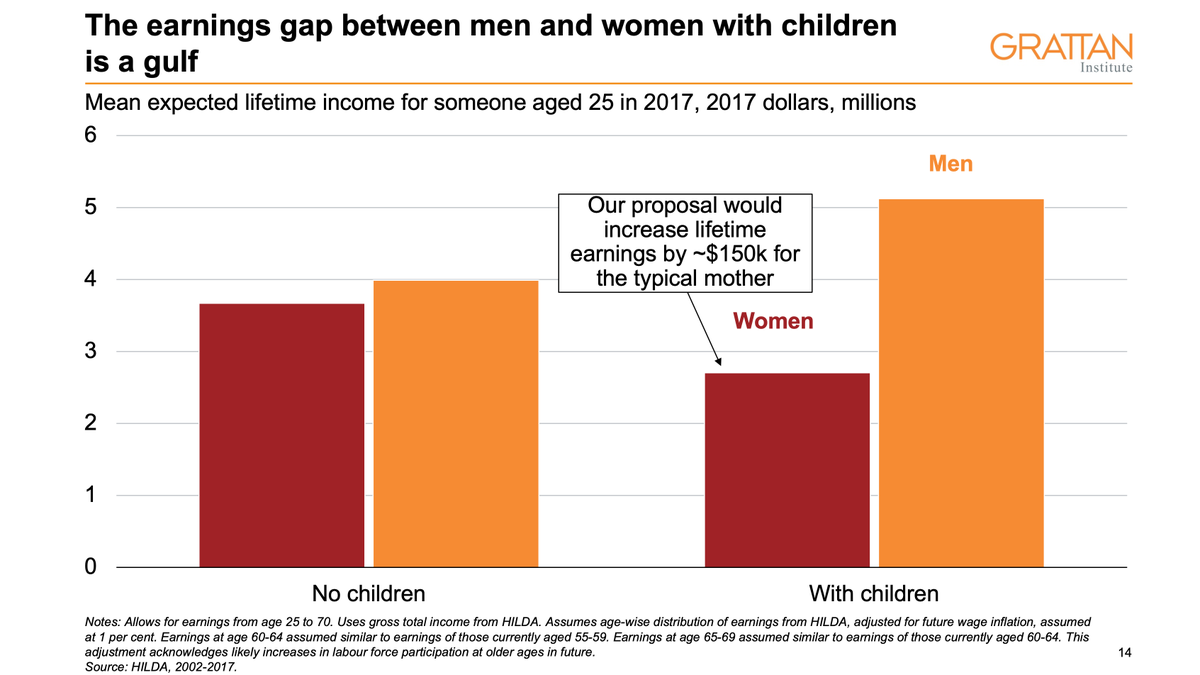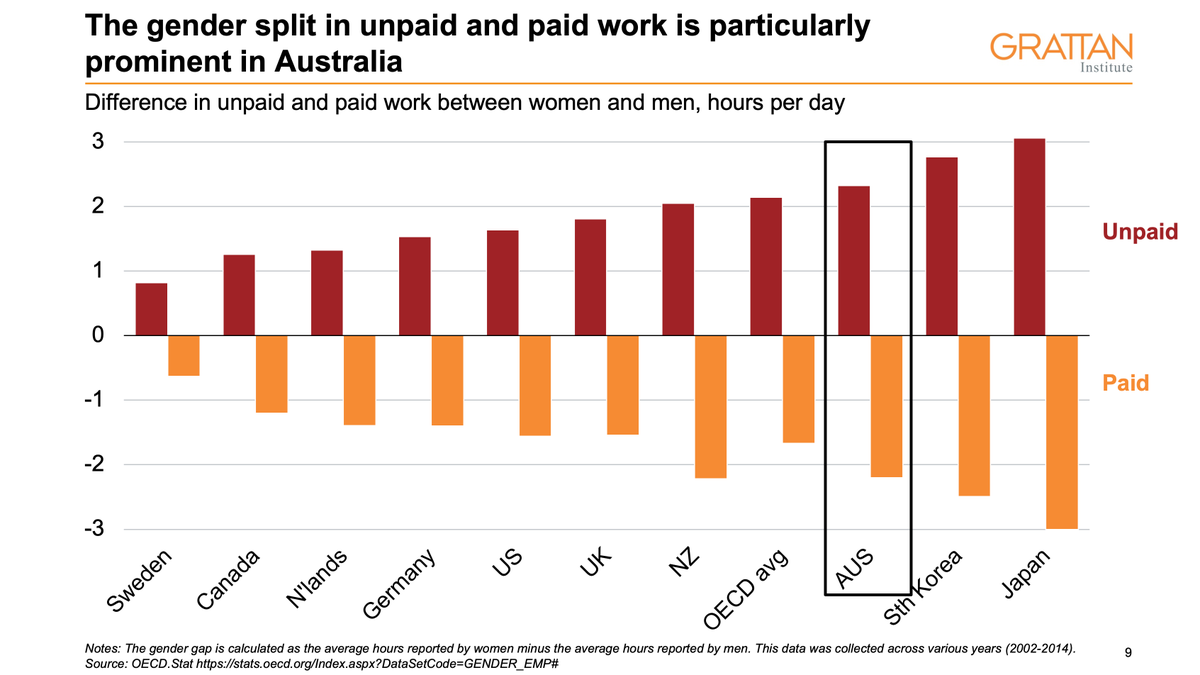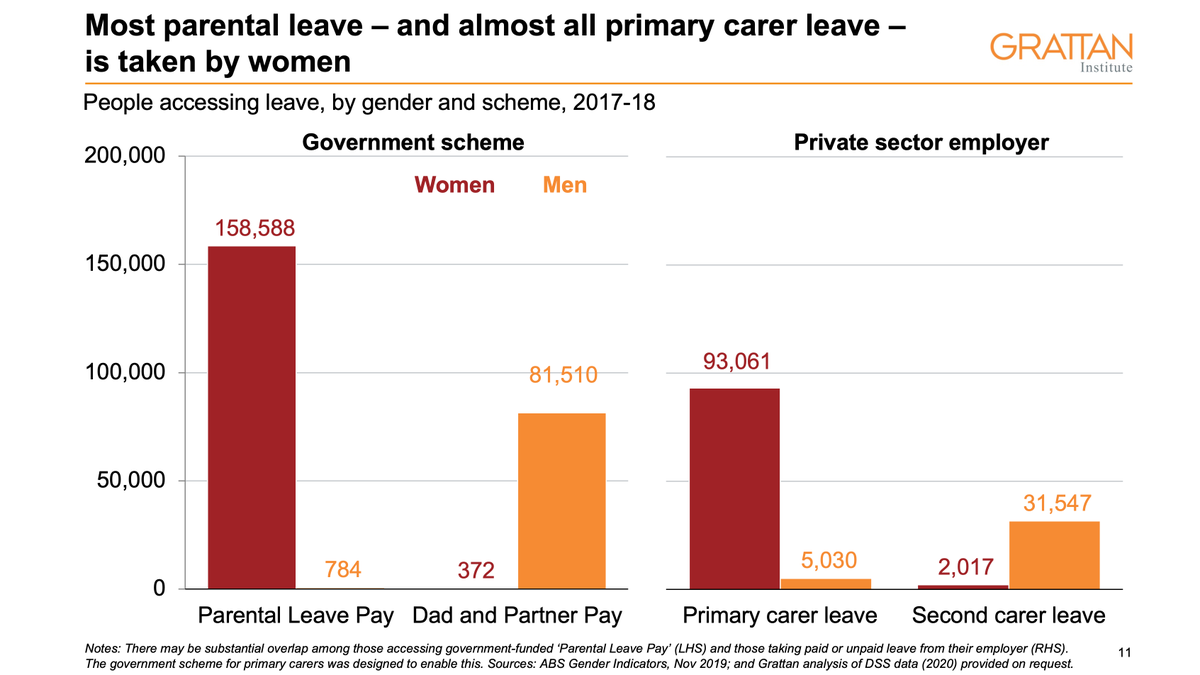1/ Would you work for nothing? Nope? Thought so.
Could this be why so many Australian mums work part-time? Tax, welfare and childcare costs mean that full time work for the primary carer is often financially fruitless. Let’s break that down…
Could this be why so many Australian mums work part-time? Tax, welfare and childcare costs mean that full time work for the primary carer is often financially fruitless. Let’s break that down…
2/ A typical Australian woman with young children is employed 2-3 days a week, much less than women in many other countries.
4/ This impacts take-home pay. A family with 2 kids in childcare, each on $60k FTE. The primary carer gets:
-Day 4: about $2 an hour
-Day 5: nothing
No wonder 2-3 days is the norm.
-Day 4: about $2 an hour
-Day 5: nothing
No wonder 2-3 days is the norm.
5/ Our plan for childcare:
Boost the Child Care Subsidy to 95% for low-income families, with a gradual taper so primary carers aren’t severely punished for returning to work.
Boost the Child Care Subsidy to 95% for low-income families, with a gradual taper so primary carers aren’t severely punished for returning to work.
6/ 60% of families would pay < $20 a day per child for childcare. Doing it now would help the COVID recovery.
7/ Making childcare cheaper is a huge economic reform – costing an extra $5b a year but boosting GDP by $11b a year and adding ~$150k to a typical mother’s lifetime earnings.
8/ Added to these financial disincentives is enormous gap between paid and unpaid work by mothers, especially after the birth of the first child.
9/ Unpaid work limits women& #39;s choices about paid work. Australia has a more gendered division of labour than most other OECD countries.
10/ Govt parental leave schemes are critical but can ‘lock in’ the mother as the main carer. The Aus scheme makes it hard to share parental leave.
11/ In Australia, we have one of the shortest and least-generous paid leave schemes for mothers, and we offer little for fathers. Countries that target fathers see long-term shifts in sharing unpaid work.
12/ A better model would be 6 weeks of ‘use it or use it’ leave for each parent, +12 weeks to share between them. This would help dads to spend more time with their kids in the critical 1st year and share the unpaid workload.
13/ You can read more about these recommendations in our new report, Cheaper childcare: A practical plan to boost female workforce participation by @danielleiwood @_kgriffiths & @EmslieOwain https://grattan.edu.au/report/cheaper-childcare/">https://grattan.edu.au/report/ch...

 Read on Twitter
Read on Twitter